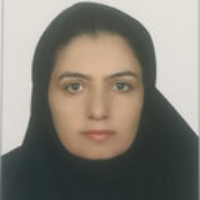Classification of Landforms Using Topographic Location Index and Assessment of their Actual Soil Erosion Risk in Mountainous Areas(Case Study: Kharestan Watershed)
One of the new and unique sections, especially in internal studies, is the quantitative examination of unevenness. The scientific and quantitative study of topographic position has always been one of the topics that have received little attention in domestic research. So, classification and identification of different morphometrically distinct regions are necessary. Thus, the present study aims to classify landforms in the northwest of Fars province, Kharestan region and investigate its factors affecting. In this regard, the Topographic Position Index (TPI) method was used in the first stage to classify landforms, followed by the CORINE method to determine erosion risk classes. Additionally, Landsat 8 satellite images from June 2017 were used to determine the normalized differential vegetation index (NDVI). The next step was to determine the relationship between different types of landforms and terrestrial factors such as height, slope, slope direction, topographic wetness index (TWI), Terrain Ruggedness Index (TRI) and NDVI. Finally, the status of different landforms was determined based on erosion risk classes. Results showed ten different types of landforms existed within the study area. Small plains (1.18%) were the lowest in the study area, while waterways (27.71%) and high peaks (27.48%) were the highest. The TWI was significantly correlated with landform classes at 95% level. Most of the region (91.71%) had NDVI classes of 0.1 to 0.3. Stream and u-shaped valleys were found to have higher NDVI values. Real erosion risk was classified into three classes: low, medium, and high with areas of 31.14, 31.11, and 37.78%. There were 44, 57, and 59% erosion levels in the low, medium, and high erosion classes, respectively.
-
Assessment of Heavy Metal Pollution Levels and Spatial Distribution in Road Dust (A Case Study in Health Centers of Yazd City)
Ommolbanin Karimzadeh, Abolfazl Ranjbar Fordoie *, Zohre Ebrahimi-Khusfi, Reza Dahmardeh Behrouz
Journal of Natural environment hazards, -
Investigating the Impact of Drought on Vegetation and Evapotranspiration Using MODIS Sensor Images: A Case Study of Tehran Province
Shima Javadi, Abolfazl Ranjbar Fordoie*, Hassan Khosravi, Eskandari Damaneh
Journal of Rangeland, -
Soil Erosion Risk Assessment Using CORINE Model in Kharestan Watershed, Fars Province
*, , Abbasali Vali, Marzieh Mokarram
Desert Ecosystem Engineering Journal, -
Analyzing of the spatio-temporal changes of vegetation and its response to environmental factors in north of Fars province, Iran
Abolfazl Ranjbar*, Abbasali Valia, Marzieh Mokarramb, c
Iranian Journal of Remote Sencing & GIS,



